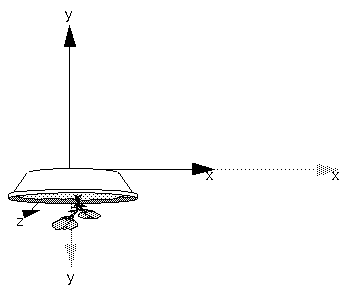| Scaling
void glScale{fd}(TYPEx, TYPE y, TYPEz);
Multiplies the current matrix by a matrix that stretches,
shrinks, or reflects an object along the axes. Each x, y, and z coordinate
of every point in the object is multiplied by the corresponding argument
x, y, or z. With the local coordinate system approach, the local coordinate
axes are stretched, shrunk, or reflected by the x, y, and z factors, and
the associated object is transformed with them.

Scale factors < | 1.0 | reduce the size of objects
Scale factors < 0.0 reflect the object across an axis
NOTE! Using
glScale*() decreases the performance of lighting calculations, because
the normal vectors have to be renormalized after transformation.
|